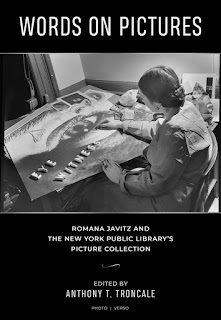EBOOK edition of Words on Pictures available now

Marion . Subject heading: Curiosity. engraving, ca. 1850. Stahlstich v. Carl Mayer’s Kunst-Anstalt in Nürnberg. The Miriam and Ira D. Wallach Division of Art, Prints and Photographs: Picture Collection, The New York Public Library. Curious? For the nominal cost of $4.99 you can get the ebook Words on Pictures: Romana Javitz and the New York Public Library's Picture Collection. Covering the years 1916 to 1965, Words on Pictures is an excellent resource for the study of the use and dissemination of printed visual resources during of the age of photo-mechanical reproduction. The story of the Picture Collection cannot be told without the story of Romana Javitz (1903-1980) who was head of the Picture Collection from 1928-1968. A pioneering librarian whose career spans the rise of print media, cinema and the mass circulation of illustrated magazines and newspapers across the globe. In three interviews included in the publication Javitz reveals a mastery of the semantics of...






